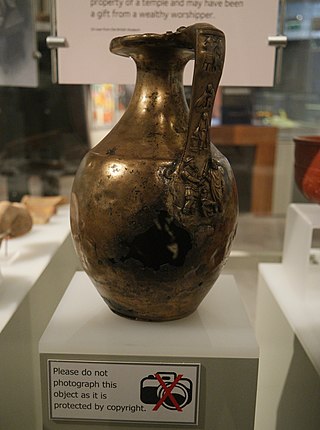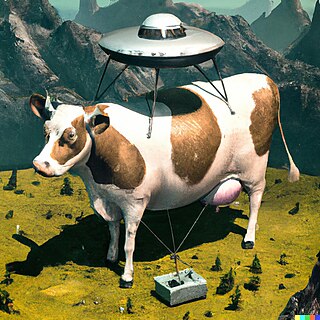Related Research Articles

A copyright is a type of intellectual property that gives the creator of an original work, or another right holder, the exclusive and legally secured right to copy, distribute, adapt, display, and perform a creative work, usually for a limited time. The creative work may be in a literary, artistic, educational, or musical form. Copyright is intended to protect the original expression of an idea in the form of a creative work, but not the idea itself. A copyright is subject to limitations based on public interest considerations, such as the fair use doctrine in the United States.

A photographer is a person who uses a camera to make photographs.
An open standard is a standard that is openly accessible and usable by anyone. It is also a common prerequisite that open standards use an open license that provides for extensibility. Typically, anybody can participate in their development due to their inherently open nature. There is no single definition, and interpretations vary with usage. Examples of open standards include the GSM, 4G, and 5G standards that allow most modern mobile phones to work world-wide.

A Creative Commons (CC) license is one of several public copyright licenses that enable the free distribution of an otherwise copyrighted "work". A CC license is used when an author wants to give other people the right to share, use, and build upon a work that the author has created. CC provides an author flexibility and protects the people who use or redistribute an author's work from concerns of copyright infringement as long as they abide by the conditions that are specified in the license by which the author distributes the work.
An open file format is a file format for storing digital data, defined by an openly published specification usually maintained by a standards organization, and which can be used and implemented by anyone. An open file format is licensed with an open license. For example, an open format can be implemented by both proprietary and free and open-source software, using the typical software licenses used by each. In contrast to open file formats, closed file formats are considered trade secrets.

Stock photography is the supply of photographs that are often licensed for specific uses. The stock photo industry, which began to gain hold in the 1920s, has established models including traditional macrostock photography, midstock photography, and microstock photography. Conventional stock agencies charge from several hundred to several thousand US dollars per image, while microstock photography may sell for around US$0.25 cents. Professional stock photographers traditionally place their images with one or more stock agencies on a contractual basis, while stock agencies may accept the high-quality photos of amateur photographers through online submission.

Remix culture, also known as read-write culture, is a term describing a culture that allows and encourages the creation of derivative works by combining or editing existing materials. Remix cultures are permissive of efforts to improve upon, change, integrate, or otherwise remix the work of other creators. While combining elements has always been a common practice of artists of all domains throughout human history, the growth of exclusive copyright restrictions in the last several decades limits this practice more and more by the legal chilling effect. In reaction, Harvard law professor Lawrence Lessig, who considers remixing a desirable concept for human creativity, has worked since the early 2000s on a transfer of the remixing concept into the digital age. Lessig founded the Creative Commons in 2001, which released a variety of licenses as tools to promote remix culture, as remixing is legally hindered by the default exclusive copyright regime applied on intellectual property. The remix culture for cultural works is related to and inspired by the earlier Free and open-source software for software movement, which encourages the reuse and remixing of software works.
Rights Managed, or RM, in photography and the stock photo industry, refers to a copyright license which, if purchased by a user, allows the one-time use of the photo as specified by the license. If the user wants to use the photo for other uses an additional license needs to be purchased. RM licences can be given on a non-exclusive or exclusive basis. In stock photography RM is one of the two common license types together with royalty-free, subscription and microstock photography being business models often confused as separate license types.
Shutterstock, Inc. is an American provider of stock photography, stock footage, stock music, and editing tools; it is headquartered in New York. Founded in 2003 by programmer and photographer Jon Oringer, Shutterstock maintains a library of around 200 million royalty-free stock photos, vector graphics, and illustrations, with around 10 million video clips and music tracks available for licensing. Originally a subscription site only, Shutterstock expanded beyond subscriptions into a la carte pricing in 2008. It has been publicly traded on the New York Stock Exchange since 2012.

A copyfraud is a false copyright claim by an individual or institution with respect to content that is in the public domain. Such claims are unlawful, at least under US and Australian copyright law, because material that is not copyrighted is free for all to use, modify and reproduce. Copyfraud also includes overreaching claims by publishers, museums and others, as where a legitimate copyright owner knowingly, or with constructive knowledge, claims rights beyond what the law allows.

Freedom of panorama (FOP) is a provision in the copyright laws of various jurisdictions that permits taking photographs and video footage and creating other images of buildings and sometimes sculptures and other art works which are permanently located in a public place, without infringing on any copyright that may otherwise subsist in such works, and the publishing of such images. Panorama freedom statutes or case law limit the right of the copyright owner to take action for breach of copyright against the creators and distributors of such images. It is an exception to the normal rule that the copyright owner has the exclusive right to authorize the creation and distribution of derivative works.
Proprietary software is software that grants its creator, publisher, or other rightsholder or rightsholder partner a legal monopoly by modern copyright and intellectual property law to exclude the recipient from freely sharing the software or modifying it, and—in some cases, as is the case with some patent-encumbered and EULA-bound software—from making use of the software on their own, thereby restricting their freedoms.

Limitations and exceptions to copyright are provisions, in local copyright law or the Berne Convention, which allow for copyrighted works to be used without a license from the copyright owner.
Digital rights management (DRM) is the management of legal access to digital content. Various tools or technological protection measures (TPM), such as access control technologies, can restrict the use of proprietary hardware and copyrighted works. DRM technologies govern the use, modification and distribution of copyrighted works and of systems that enforce these policies within devices. DRM technologies include licensing agreements and encryption.

Copyright infringement is the use of works protected by copyright without permission for a usage where such permission is required, thereby infringing certain exclusive rights granted to the copyright holder, such as the right to reproduce, distribute, display or perform the protected work, or to make derivative works. The copyright holder is typically the work's creator, or a publisher or other business to whom copyright has been assigned. Copyright holders routinely invoke legal and technological measures to prevent and penalize copyright infringement.

The Digital Millennium Copyright Act (DMCA) is a 1998 United States copyright law that implements two 1996 treaties of the World Intellectual Property Organization (WIPO). It criminalizes production and dissemination of technology, devices, or services intended to circumvent measures that control access to copyrighted works. It also criminalizes the act of circumventing an access control, whether or not there is actual infringement of copyright itself. In addition, the DMCA heightens the penalties for copyright infringement on the Internet. Passed on October 12, 1998, by a unanimous vote in the United States Senate and signed into law by President Bill Clinton on October 28, 1998, the DMCA amended Title 17 of the United States Code to extend the reach of copyright, while limiting the liability of the providers of online services for copyright infringement by their users.
Collective rights management is the licensing of copyright and related rights by organisations acting on behalf of rights owners. Collective management organisations (CMOs), sometimes also referred to as collecting societies, typically represent groups of copyright and related rights owners, i.e.; authors, performers, publishers, phonogram producers, film producers and other rights holders. At the least, rights holders authorize collective rights management organizations to monitor the use of their works, negotiate licenses with prospective users, document correct right management data and information, collect remuneration for use of copyrighted works, ensuring a fair distribution of such remuneration amongst rightsholders. CMOs also act on legal mandates. Governmental supervision varies across jurisdictions.
Can Stock Photo was a stock photography provider which licenses royalty-free images, photos, digital illustrations, picture clip art and footage files on behalf of photographers, illustrators, and videographers. Founded in 2004, it was one of the earliest microstock agencies. The Can Stock Photo will cease exist on October 1, 2023.

Artificial intelligence art is any visual artwork created through the use of artificial intelligence (AI) programs such as text-to-image models. AI art began to gain popularity in the mid- to late-20th century through the boom of artificial intelligence.
In the 2020s, the rapid advancement of deep learning-based generative artificial intelligence models are raising questions about whether copyright infringement occurs when the generative AI is trained or used. This includes text-to-image models such as Stable Diffusion and large language models such as ChatGPT. As of 2023, there are several pending U.S. lawsuits challenging the use of copyrighted data to train AI models, with defendants arguing that this falls under fair use.
References
- ↑ Peres, Michael R (2007). The Focal encyclopaedia of photography: digital imaging, theory and applications, history, and science. Focal Press. pp. 352–353. ISBN 978-0-240-80740-9.
- ↑ "What Does Royalty Free Mean? A Complete Guide to Royalty-Free Content". PikWizard.com. Retrieved 2024-01-22.
- ↑ "WIPO Lex, Spain, Law No. 22/1987 of November 11, 1987, on Intellectual Property". www.wipo.int. Retrieved 2023-08-07.
- ↑ Urheber , retrieved 2023-08-07
- ↑ "Artificial intelligence and copyright". www.wipo.int. Retrieved 2023-08-07.
- ↑ "Generative artificial intelligence", Wikipedia, 2023-08-06, retrieved 2023-08-07